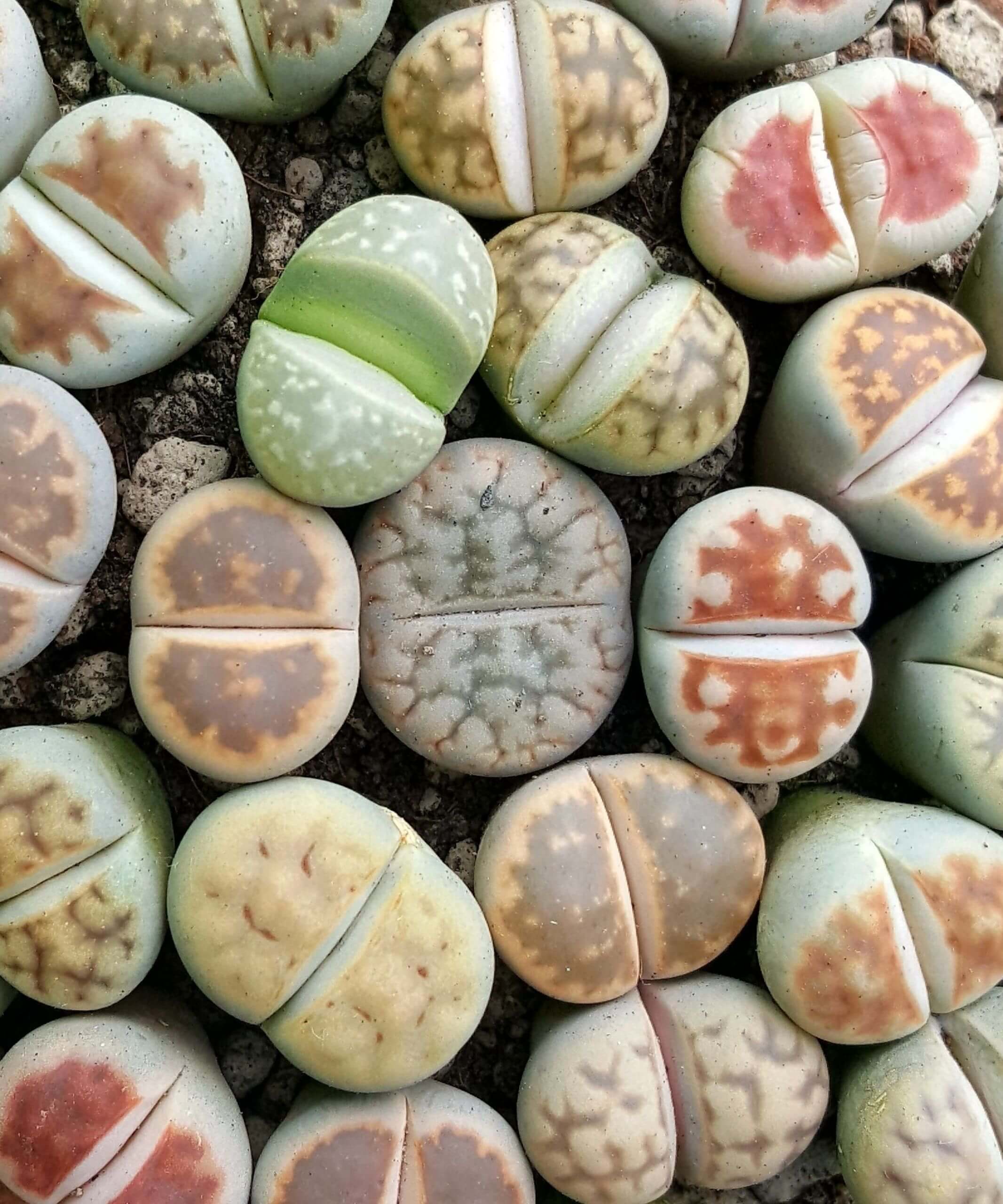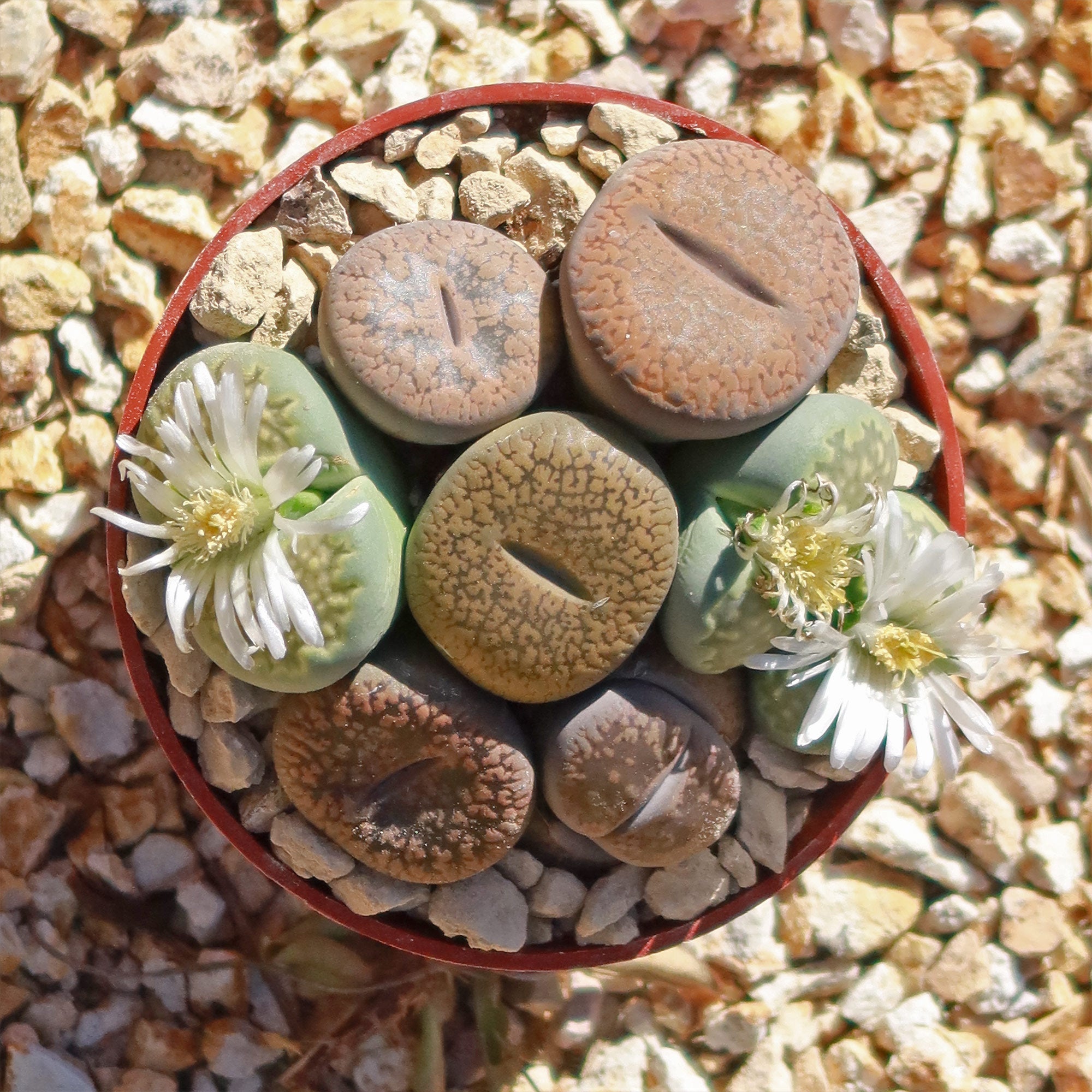
Lithops Plant
Lithops Plant: The Fascinating Living Stones
Introduction
Lithops plants, also known as living stones or pebble plants, are a fascinating group of succulent plants that have evolved to resemble stones to blend in with their natural habitat in the deserts of southern Africa. These unique plants have gained popularity among plant enthusiasts and collectors for their unusual appearance and low maintenance requirements.
Origin and Habitat
Lithops plants are native to the arid regions of southern Africa, including South Africa, Namibia, and Botswana. They thrive in rocky, sandy soils with limited water availability, making them well-adapted to survive in harsh desert conditions. The name Lithops is derived from the Greek words lithos, meaning stone, and ops, meaning face, reflecting their stone-like appearance.
Physical Characteristics
Lithops plants are small, low-growing succulents that typically grow in clusters of two or more. They consist of two thick, fleshy leaves that are fused together at the base, forming a slit-like opening at the top where new growth emerges. The leaves are often patterned with intricate markings and textures that mimic the appearance of stones, helping them blend in with their surroundings.
Growing Conditions

To successfully grow Lithops plants, it is essential to replicate their natural habitat as closely as possible. They require well-draining soil with a sandy or gravelly texture to prevent waterlogging, as excess moisture can lead to root rot. Lithops also prefer bright, indirect sunlight and warm temperatures between 70-80 degrees Fahrenheit.
Watering and Feeding
One of the most critical aspects of caring for Lithops plants is proper watering. These succulents have adapted to survive long periods of drought by storing water in their leaves, so they are highly susceptible to overwatering. It is recommended to water Lithops sparingly, only when the soil is completely dry, typically every 2-3 weeks during the growing season. Additionally, feeding Lithops with a diluted cactus or succulent fertilizer once a month during the growing season can help promote healthy growth.
Propagation
Lithops plants can be propagated from seeds or by division. Seed propagation is the most common method and involves sowing fresh Lithops seeds in a well-draining soil mix and keeping them warm and moist until they germinate. Division is another option for propagating Lithops, where the plant is carefully separated into smaller clusters and replanted in fresh soil.
Pests and Diseases

Lithops plants are relatively resistant to pests and diseases, thanks to their thick, fleshy leaves that deter most insects. However, they may occasionally be affected by common succulent pests such as mealybugs, aphids, and spider mites. To prevent infestations, regularly inspect your Lithops plants for signs of pests and treat them promptly with neem oil or insecticidal soap if necessary.
Popular Varieties
There are over 40 species of Lithops plants, each with its unique colors, patterns, and markings. Some popular varieties include Lithops aucampiae, Lithops karasmontana, and Lithops lesliei, known for their vibrant hues and striking patterns. Collectors often seek out rare and unusual Lithops varieties to add to their collections.
Common Misconceptions
One common misconception about Lithops plants is that they are not real plants, but rather artificial or man-made creations due to their unusual appearance. In reality, Lithops are living, breathing succulents that have evolved over millions of years to survive in harsh desert environments through adaptation and camouflage.
Benefits of Growing Lithops
Growing Lithops plants can be a rewarding experience for plant enthusiasts and collectors alike. Their unique appearance and low maintenance requirements make them an excellent choice for beginners and experienced growers alike. Additionally, caring for Lithops can help promote mindfulness and relaxation, as tending to these fascinating plants can be a therapeutic and enjoyable pastime.
FAQs
1. Are Lithops plants easy to care for?
Yes, Lithops plants are relatively easy to care for, as long as you provide them with the proper growing conditions and avoid overwatering.
2. How often should I water my Lithops plants?
It is recommended to water Lithops sparingly, only when the soil is completely dry, typically every 2-3 weeks during the growing season.
3. Can Lithops plants be grown indoors?
Yes, Lithops plants can be grown indoors as long as they receive bright, indirect sunlight and are placed in a well-draining soil mix.
4. What is the best soil mix for Lithops plants?
Lithops plants prefer a well-draining soil mix with a sandy or gravelly texture to prevent waterlogging and promote healthy root growth.
Conclusion
In conclusion, Lithops plants are truly unique and fascinating succulents that have captured the hearts of plant enthusiasts worldwide. Their stone-like appearance, low maintenance requirements, and adaptability to harsh desert conditions make them a popular choice for both beginners and experienced growers. By following proper care guidelines and providing them with the ideal growing conditions, you can enjoy the beauty and wonder of these living stones in your own home or garden.